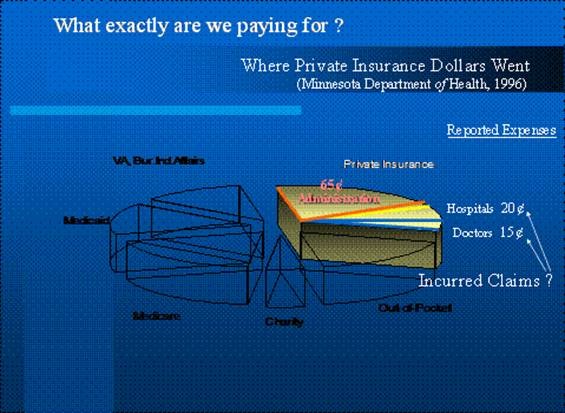Looking For Alternatives To Obamacare
Stanley Feld M.D.,FACP,MACE
The dice have been loaded against the American people by the rules and regulations in Medicare and Obamacare.
Patients liked their doctors. Once they discovered that they could not keep their doctors under Obamacare they became angry at President Obama for lying to them. The soon to be released new payment rules will increase the anger.
Physicians have found it more difficult to run small private practices. The complexities of compliance with the rules, regulations and the payment systems for both Medicare and Obamacare are forcing physicians to sell out to hospital systems.
These complexities are in effect ending independent medical practices. This has been intentional. The Obama administration doesn’t want to control 600,000 independent physicians. It wants to deal with the hospital systems the are involved with. The hospital systems can then deal with the doctors.
Republicans are looking for a compelling alternative to Obamacare.
Just as Obamacare was forced through congress, President Obama is trying to force how medicine is practiced in America down the throats of Americans.
It is consistent with Jonathan Gruber’s view that Americans are to stupid to understand what is going on. It follows that Americans are too stupid to be responsible for their own care.
Americans want freedom of choice. They do not want the government to tell them what to do.
Republicans are looking for an alternative to Obamacare. A viable alternative could be to save the private practice of medicine and not subject Americans to the inefficiencies of a government controlled bureaucracy.
Physicians by nature and education are competitive. Competition leads to improvement of the delivery of medical care.
All medicine is local. The alternative to Obamacare is to have local completion among physicians and permit patients to choose their doctors.
The answer to the Republican’s dilemma is right in front of their eyes.
A real Republican alternative to Obamacare would support physician ownership of independent medical practices and preserve local competition between doctors and maintain choice for patients.
Obamacare’s promotion of large hospital systems with salaried physicians eliminates physicians competing for patients. The lack of physicians competing for patients destroys the physician/patient relationship.
Physicians listen to patients if patients have a choice. The interaction is a partnership called the patient /physician relationship.
This solves the problem of President Obama’s lie. “If you like your doctor you can keep your doctor period.” Patients choose their doctors.
Dr. Donald Berwick and Jonathan Gruber’s view the consolidation of physicians and hospital systems as a necessary step to enable payment liability onto providers through hospital systems and away from government programs such as Medicare and Obamacare.
President Obama does not understand that doctors are not stupid either. At the moment physicians feel financially cornered by the government and the hospital systems and are joining hospital systems as a temporary means of surviving.
President Obama also does not realize that over the last 50 years there has been a build up of physician distrust for most hospital administrations.
Most administrators have tried to repair that mistrust but it has not been very successful. Hospital systems have been trying for years to own their physicians’ intellectual property and surgical skills for their hospital system’s profit. It is all about economics. Patient care is secondary.
As hospital systems consolidate competition will be eliminated. Then hospital systems will realize they are losing money because of the risk they agreed to accept from the government. Hospital systems will demand more money from the government or consumers or go out of business.
Who loses?
Patients lose, taxpayers lose, and the American healthcare system loses.
The abuses of the healthcare system by all the stakeholders must be fixed. It will never be fixed by forcing stakeholders to fix it. It will only be fixed by aligning incentives of all the stakeholders. Consumers must lead the way.
It has also been reported that hospital systems are complaining that they are losing money on their physicians in these integrated systems.
Hospital systems are dropping out of the Obamacare Accountable Care Organization programs. There have been reports that salaried physicians are less productive that independent practicing physicians.
I believe in the team approach to the management of chronic disease. The patient must be at the center of the team with the physician being the head coach or manager and his team being an extension of the physician’s care.
Medical decision making entities must not be the insurance company or the government.
The idea that integrated systems with salaried physicians leads to increased economic efficiency, better quality of care and clinical outcomes than small independent private practices never made syllogistic sense to me.
Patient care becomes depersonalized in large hospital systems. Both patients and physicians become commodities in systems focused on the bottom line.
Small practices have the advantage of providing a personal style of care. Consumers want that comfort when they are sick. They want someone they know who is going to listen to them and talk to them.
In a private setting physicians can practice the way they want, without interference by a large, impersonal organization driving efficiency.
If a physician in private practice does not satisfy the consumer’s need the consumer can leave the practice and go somewhere else.
"When you work closely with patients and empower them, they are going to make better choices," said Craig C. Koniver, MD, a solo family physician in North Charleston, South Carolina. He said a team of caregivers at a large practice will not have the same impact, because none of them are as close to the patient as he is.”
Health Affairs published a study in August 2014 looking at primary care physicians in small practices and “ambulatory care sensitive” admission rates. The study included such conditions as congestive heart failure in which admission to the hospital can be preventive by high quality primary care. The patient relates positively to the physician and the physician relates positively to the patient (positive patient/physician relationship).
“The study found that practices with 1 to 2 physicians had ambulatory care-sensitive admission rates fully 33% lower than practices with 10 to 19 physicians.”
This is not the only study that shows that small independent private practices can deliver just as high or higher quality of care than large integrated hospital systems with salaried physicans.
“ A 2013 study[2] showed that small practices in general had slightly lower hospital readmission rates than large practices.”
Additionally, “a 2012 study[3] looking at practices ranging from 5 to 750 physicians found that the smaller ones had fewer ambulatory care-sensitive admissions and lower overall costs of care for diabetes.”
All three studies turned a piece of conventional wisdom on its head; that large practices, with their care management teams and sophisticated clinical information systems, produce better clinical outcomes.
Republicans should start presenting alternatives to Obamacare. The alternative must provide consumers with what they want rather than systems that let the government to tell consumers what they are going to get.
The opinions expressed in the blog “Repairing The Healthcare System” are, mine and mine alone
Please have a friend subscribe






Heya i am for the first time here. I found this board and I find It truly useful & it helped me out a lot. I hope to give something back and aid others like you aided me.